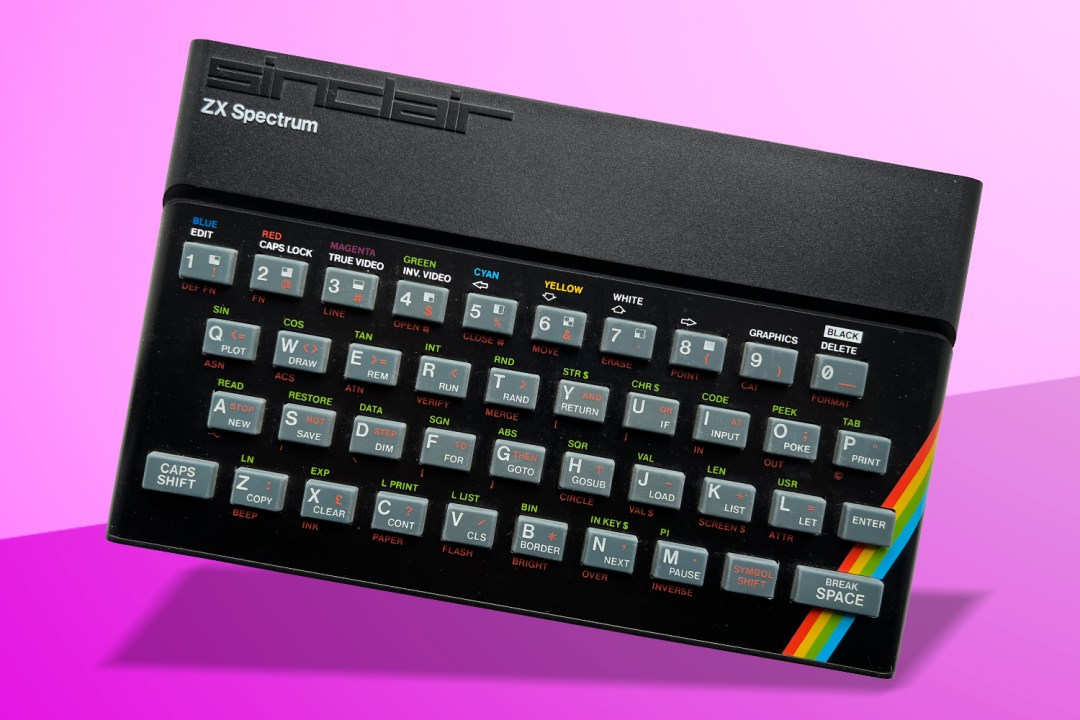Random access memories: the ZX Spectrum at 40 – and six of the best Speccy games
Rubber keys and colour clash at the ready – it’s Sir Clive Sinclair’s 8-bit wonder

The ZX Spectrum has turned 40. If you owned one at the time, that’ll make you feel old. But rather than mull over the nature of your own mortality, let’s celebrate a true UK classic – the finest invention to emerge from Sir Clive Sinclair’s brain.
Argh, the horror! I’m having rubber key flashbacks. Why are you doing this to me?
The ZX Spectrum’s dead-flesh keys were an acquired taste, but even today there’s something deeply appealing about the machine’s diminutive form. It doesn’t look like a typewriter keyboard with a badge slapped on – it’s unique and different. And it was cheap too: all the decisions Sinclair made ensured the Speccy was far more affordable and accessible than micros from US rivals. At £125 for the 16k model – £175 for the 48k unit – and in being able to load programmes from a standard tape deck, it was a computer for the rest of us.
The rest of us who hated their eyes, what with the machine’s eye-searing colours…
Remember, this was 1982. It’s not like home micros of the day were blessed with photo-realistic graphics. But, yes, the Speccy had colour clash. Due to limitations imposed by memory conservation efforts, it could only display one foreground and background colour per 8×8 pixel block. Also, the sound was a shrieking beeper. By comparison, the Commodore 64 was all flash with its sprites, multi-channel sound and hardware scrolling. Still, since the Specccy lacked those things, its games creators just had to work that bit harder.
Great. So the British machine made you work harder to end up with a worse result?
Not really. Programmers saw limitations as challenges. Less hand-holding meant Speccy games had more character than sprite-based C64 efforts. The Speccy forced people to be better coders, and many went on to great things in the industry. It’s a pity Sir Clive Sinclair never came to terms with games: he hated them and wanted the Speccy to be used for ‘nobler’ pursuits. But his machine really did foster a generation of coders – just one that initially crafted games in bedrooms, pushing the ZX Spectrum far beyond what was thought possible.
Six of the best: ZX Spectrum games
Deathchase packed into just 16k an exciting 3D shooter that recalled Return of the Jedi’s speeder bike sequence.
Jetpac was another 16k effort – an eye-popping single-screen blaster by Ultimate (later Rare) that felt like an arcade game.
Speaking of arcades, Chase HQ was a sublime showcase for how an advanced arcade cab could be squeezed into the humble Speccy.
If you preferred more thinky fare, Lords of Midnight was more or less an interactive Lord of the Rings inside your micro.
Head Over Heels built on classic platformers (Manic Miner) and isometric puzzlers (Knight Lore) to craft a much-loved epic.
Finally, Skool Daze epitomised the quirky Britishness of many Speccy games, having you run riot in a virtual school.
• The ZX Spectrum Next Plus brings back Britain’s best-ever computer – again




